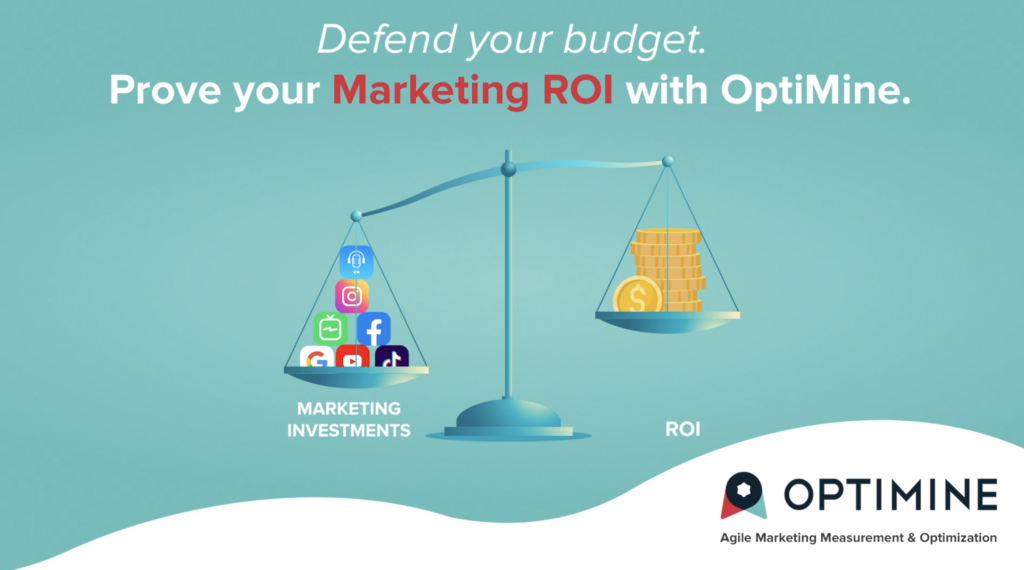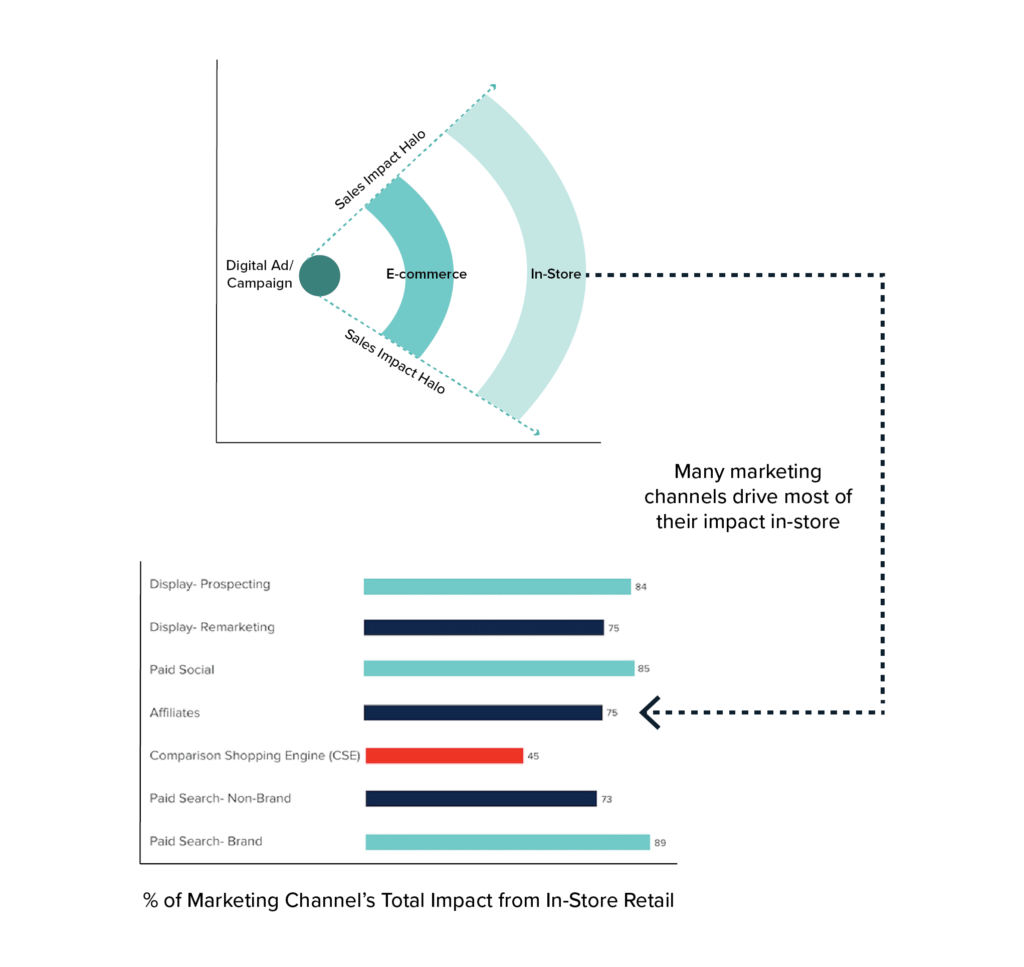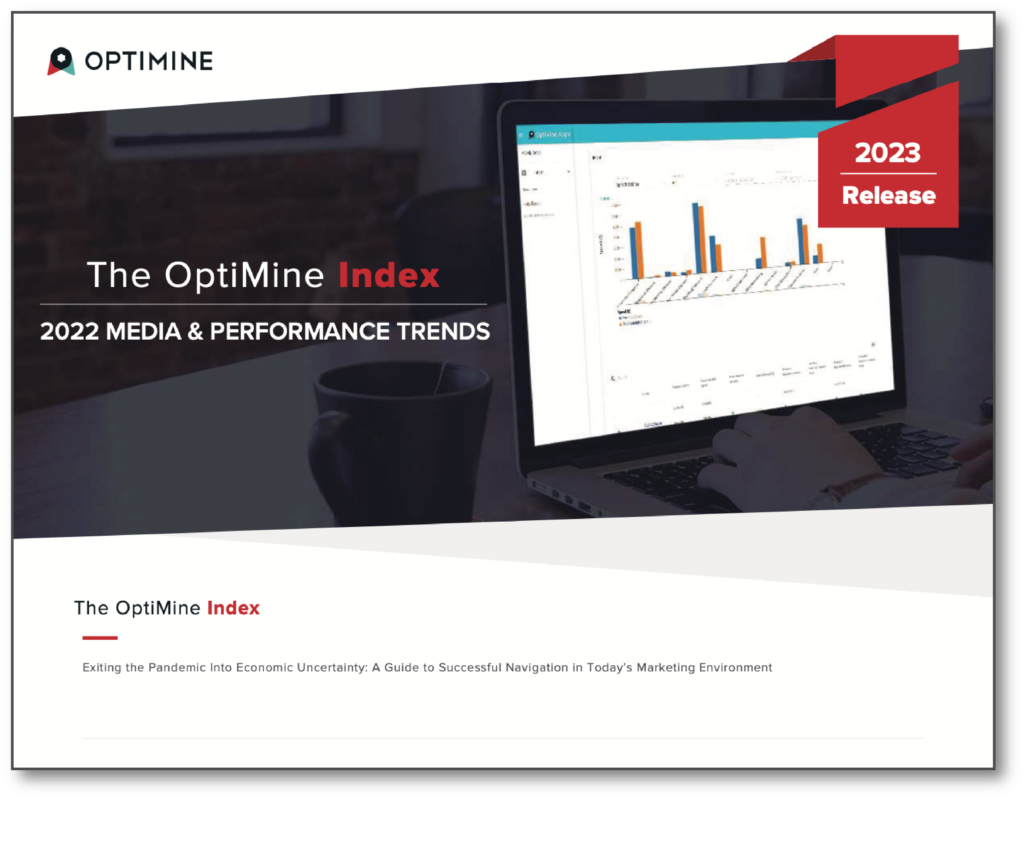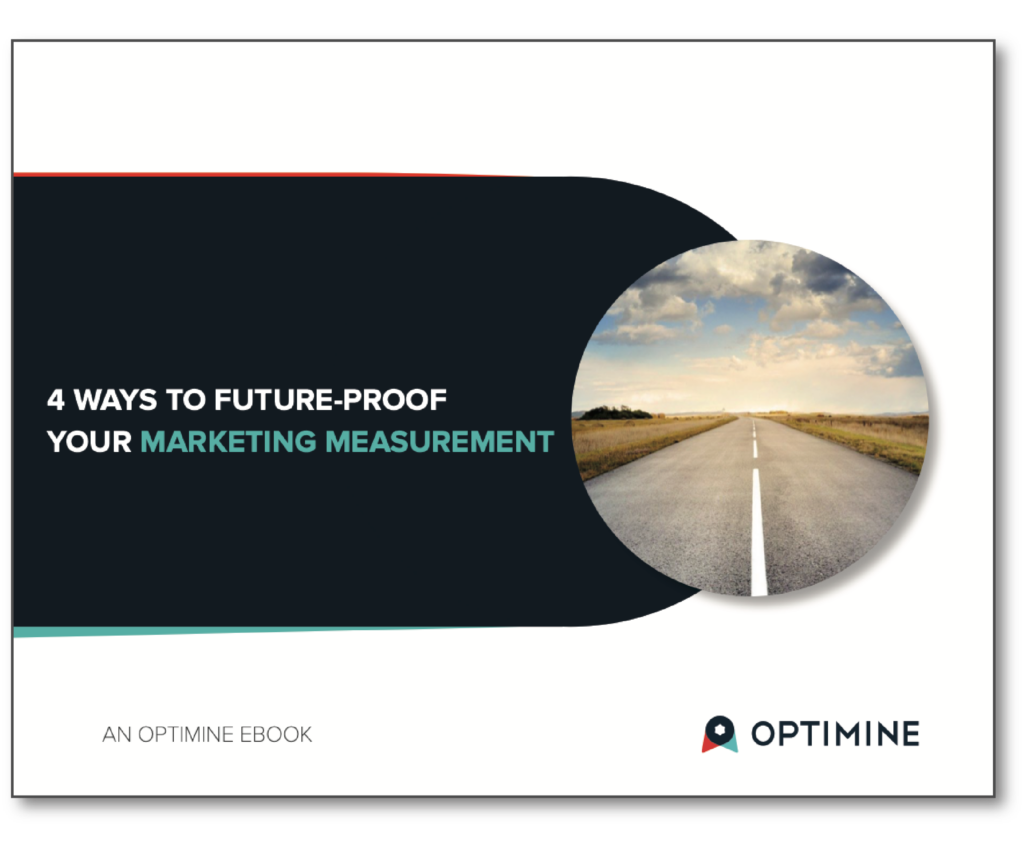Contents
- 1. You Need a Marketing Measurement Intervention.
- 2. Don’t Walk Away from the Upper Funnel
- The Benefits of Upper Funnel Marketing:
- 3. Move to Future-Proof Measurement (Agile Marketing Mix Modeling— “Agile MMM”)
- 4. Choose Your Own Adventure: Embrace Scenario Planning to Navigate Uncertainty
- 5. Improve How You Communicate Your Value
- Making the Case for Advanced Marketing Measurement & Optimization
Defend Your Budget. Prove Your Marketing ROI.
05/25/2023

Economic uncertainty is driving brands and their finance teams to reduce costs. One of the most predictable levers that companies pull in these situations is to reduce marketing spend. It is seen as “discretionary”, can usually be cut quickly and in most cases, isn’t very well defended by the marketing team. As a result, the marketing budget is an easy target for finance.
The problem of course, is that cutting marketing almost always results in reduced revenues, and these reductions harm the brand even after a recession is over.
At OptiMine, we speak about marketers getting “cold feet” in times of budget pressures and not being able to defend their investments. So what are the keys to avoid getting cold feet and moving to recession-proof your advertising and marketing? Read on for the top 5 proven approaches that will help you defend your budget and prove your marketing ROI.
1. You Need a Marketing Measurement Intervention.
Your current marketing measurement may be hurting your business. Your marketing is driving real business, but if your measurement isn’t capturing the total value of your marketing investments, it will harm your business.
If you are among the 60%+ of companies that are still relying on tracking-based attribution including last-touch, multi-touch or fractional attribution approaches, you need to stop. These approaches are no longer reliable nor accurate and using them to make decisions is very likely harming your business.
Consider all of these (upcoming) privacy changes:
- Apple’s ITP (Intelligent Tracking Prevention) and ATT (App Tracking Transparency) privacy initiatives have taken a huge toll on the ability to track users and sessions on any Apple device: 75% of users have opted out of tracking on their devices (source).
- Google Privacy Sandbox: with Google’s killing off the 3rd party cookie, they have also announced they will no longer allow individual tracking in Chrome. So that takes nearly all the entire ecosystem offline, unless of course you are relying on Google to tell you how well Google is working.
- Privacy Regulations: California isn’t the only state in the US to have enacted consumer privacy regulations. Plus, it is going to get worse as dozens of states come on board with their own (slightly different) versions of consumer privacy laws.
- Last-touch methods routinely miss the majority of value of ads that are not in the lowest part of the sales funnel. OptiMine’s own Index which is a benchmark comparison of all marketing channels’ relative performance compiled across OptiMine’s extensive client base, shows the average incremental value that digital marketing contributes, broken out by e-commerce vs in-store. If you have offline conversions, whether in a store, branch, call center, via sales agents or through channels, using click-based measurement for your digital campaigns is a major problem. For example, our most recent OptiMine Index shows the amount of offline business impacts various marketing channels have. Well over half of many channels’ impact is on offline conversions- all value and lift that last-click misses completely:

The total sum of these various measurement challenges adds up to significant opportunity loss for you and your brand if you’re still relying on identity data to measure the performance of your ads.
The issue will be felt the most acutely when finance comes to reduce the marketing budget. In this situation, two things will happen with near certainty:
- Cuts will be made in the mid and upper areas of the marketing funnel because of their extremely low (or zero) direct engagement (click) rates. Some of these investments truly under-perform, the problem is that without advanced marketing measurement, the brand won’t know which work and which don’t.
- The cuts will results in a drop in sales in the medium to longer term, and lower funnel performance will also degrade thereafter.
Are you going to make this same mistake?
Download the OptiMine Index:
Curious about what channels make the grade and which don’t? Download the full 2023 OptiMine Index (as mentioned above) and you’ll get:
- Benchmark views on what is working and what isn’t in today’s marketing environment
- Where smart dollars are moving to gain additional performance lift
- The emerging market channels representing true opportunities for brands and where to test
- Where more efficient alternatives reside in the complex mix of marketing channels

2. Don’t Walk Away from the Upper Funnel
Brand investments are sometimes the hardest to measure and prove lift. Brand-related marketing has a longer impact and may not affect sales in the near term. Likewise, branding effects take longer to re-start and rebuild once brand marketing is shut off, and this is precisely one of the problems when shutting down these areas of the marketing budget.

The risks are many:
Risk #1 – Cutting Upper Funnel Spend Will Harm Your Funnel: Some areas of your mid and upper funnel advertising work very well to impact both the short term and beyond, but lack clicks or direct engagement. As a result, they appear to be an “easy” target for finance cuts. This highlights the problem with using antiquated and privacy-violating tracking methods of attribution (such as MTA). The accuracy issues of these approaches will yield the wrong budget cut decision and do even more harm.
The data loss happening in the market is rendering Multi-Touch Attribution (MTA) ineffective. Learn more about this data deprecation challenge in OptiMine’s eBook, below:

Risk #2 – It Takes Time to Rebuild After Cuts: Just like the stock market, it is nearly impossible to time recessions and their recoveries. So as a brand reduces its branding efforts, the shock of this will be felt later, for longer, and will be even more difficult to rebuild once reinstated as brand awareness drops off.
Risk #3 – Competition May Gain Share: When your brand reduces upper funnel investments but your competitors have not, you’ve now suffered doubly. Brand awareness and consideration for your competitors will remain steady or even improve, while yours have now been reduced. This can also be turned around into a double-advantage if your brand holds the line on brand budget cuts and your competitors fall into the budget reduction trap.
To learn how to navigate these risks and marketing spend pressures all while defending your budget, download OptiMine’s educational eBook below:

Having the right measurement solution deployed will also uncover upper funnel opportunities for more reach and cost efficiency. Consider the case of OLV, OTT and other programmatic video channels where reach and audience may be achieved more cost effectively versus linear TV, while simultaneously delivering solid shorter term performance. By choosing some of these vehicles over more traditional forms of brand advertising, you may achieve a combination of goals: maintained brand investments, with improved efficiency while protecting near-term revenues.
The key to pulling this off: knowing the full incremental value of these marketing investments & vehicles. A brand can’t pull off this double-play without the right kind of teammates (advanced marketing measurement).


The Upper Funnel “Double-Play”
The Benefits of Upper Funnel Marketing:
Brand Awareness
- Introduces your brand to a wider audience
- Increases visibility and recognition in the market
Audience Expansion
- Targets new and untapped audiences
- Expands reach beyond existing customer bases
Educating Consumers
- Communicates the value proposition and unique selling points
- Educates consumers about the product or service
Building Trust
- Establishing credibility and trust in the market
- Encourages positive perceptions about the brand
Prepares for Consideration
- Sets the stage for consumers to consider your product or service
- Creates a foundation for the middle and lower funnel activities
Enhanced Marketing ROI
- Contributes to a more efficient and effective overall marketing strategy
- Maximizes the return on investment by optimizing the entire customer journey
3. Move to Future-Proof Measurement (Agile Marketing Mix Modeling— “Agile MMM”)
There are safe alternatives out there that can replace tracking, posing no compliance risk(s) to your brand. One of these safe alternatives is a modern version of Marketing mix modeling— or Agile MMM —which is a traditional measurement methodology that has been in place over the last several decades used by large brands to measure the broad impacts of broadcast media, but has been updated for the needs for speed, detail and flexibility that modern brands need.
And it turns out that you can teach an old dog new tricks. Today’s agile, modern MMM can be an entirely different animal— one that runs circles around tracking-based attribution and traditional methods of MMM:
- It is fast: while traditional MMM is extremely slow, manual and inflexible, modern MMM using AI and high-scale software is deployed in a fraction of the time and can deliver continuous updates.
- Delivers deeply granular, actionable measurement: traditional MMM is summarized at channel levels and is difficult to take action on. Today’s modern MMM delivers insights at campaign and execution levels to provide marketers and agency partners deeply granular and detailed guidance.
- It measures both digital and traditional marketing vehicles: unlike multi-touch attribution, today’s MMM measures both digital and traditional media in detail so no investment is left out of the measurement picture.
- Measuring performance across any online or offline conversion point: likewise, modern MMM measures any conversion point: online, offline, in-app, call center, agent and field channels, and anything else under the sun.
4. Choose Your Own Adventure: Embrace Scenario Planning to Navigate Uncertainty
Life is uncertain, and so is your budget right now. Scenario planning is an optimization technique that allows the marketer (meaning you) to run different what-if scenarios to determine the most optimal allocation of your marketing budget given those what-ifs, along with the most likely outcome if you follow that allocation. So when finance comes knocking on your door looking for budget cuts, you can show why reductions will harm your business (and where). Better yet, you can then show other scenarios that will yield improvements and get finance on board with these changes via data-driven arguments for a better marketing investment decision.
5a. Plan for Uncertainty
The quote from Eleanor Roosevelt says it all, “It takes as much energy to wish as it does to plan.” Now with high-scale software and advanced analytics, planning is easier than ever. Running scenario plans to account for uncertainty takes many of the risks, fear and mistakes that might arise when business, the economy or consumer behaviors don’t match expectations.
One OptiMine customer decided to run an A/B test comparing marketing budget allocations during the pandemic as uncertainty abounded. They split markets into two groups: one set that followed their typical budget allocations and another that followed OptiMine’s optimization recommendations. The outcome was extraordinary: revenue growth driven by the OptiMine optimized budget was over double that of the control group.
5b. Plan for Both the Short Term and the Long
Scenario planning isn’t just for annual budgets or long-term planning. Consider these shorter-term use cases:
- What is the right marketing mix for the final 3 weeks to help us hit the quarter?
- Finance told us we have extra dollars to invest at the end of the year- where should we spend it?
- Finance told us we need to cut 10% of our budget this month- what are the safest areas to do this causing the least amount of harm?
The right scenario planning tools allow you to instantly evaluate these types of questions and avoid guessing. By using scenario plans, you act with confidence and more certainty to improve your odds of marketing success.
5c. Make Sure Plans Are Actionable
Most MMM tools are too generalized for any team to make specific actions for improvement. Consider this type of common MMM output:
Recommendation: spend 3% more on Paid Search
What is the paid search team supposed to do with that guidance? If your brand has dozens of ad groups, hundreds of campaigns or uses any normal level of complexity in paid search, this type of guidance is completely useless.
So, why should scenario planning guidance lack actionable detail? This is where software, scale and AI come into play and can mean the difference between guidance of zero value and achieving real ROI and succeeding. The devil is in the detail, but so is the ROI and performance lift.
5. Improve How You Communicate Your Value
Getting the C-suite on board with avoiding budget cuts and investing in new measurement solutions requires a strategic and data-driven approach. Here’s a step-by-step guide to help a marketing team improve how they communicate their value:
(1) Understand C-Suite Priorities
- Identify the key business objectives and priorities of the C-suite
- Align proposed measurement solutions with these overarching goals
(2) Build a Business Case
- Clearly articulate the need for accurate measurement in achieving business objectives
- Showcase how improved measurement can positively impact the bottom line
(3) Quantify ROI
- Demonstrate the return on investment (ROI) of the proposed measurement solutions
- Use historical data or industry benchmarks to provide concrete numbers
(4) Link Measurement to Key Performance Indicators (KPIs)
- Tie the new measurement solutions directly to critical marketing and business KPIs
- Show how accurate measurement will contribute to achieving or surpassing these KPIs
(5) Educate on Industry Trends
- Present information on emerging trends in marketing measurement
- Highlight how competitors or industry leaders are leveraging advanced measurement tools
(6) Provide a Competitive Analysis
- Showcase how investing in measurement solutions will give the company a competitive advantage
- Compare the benefits of these solutions against competitors’ approaches
(7) Highlight Risks of Budget Cuts
- Illustrate the potential negative impact of budget cuts on marketing effectiveness
- Emphasize that cutting measurement budgets may lead to inaccurate decision-making
(8) Offer Pilot Programs
- Propose a pilot program to test the effectiveness of the new measurement solutions
- Provide a small-scale, low-risk demonstration of the benefits before full implementation
(9) Showcase Success Stories
- Share case studies or success stories from other companies that have implemented similar measurement solutions
- Emphasize the positive outcomes and improvements achieved
(10) Demonstrate Accountability
- Communicate how the new measurement solutions will enhance transparency and accountability
- Assure the C-suite that resources will be used efficiently and results will be measurable
(11) Involve the C-Suite in Decision-Making
- Seek input and involvement from the C-suite in the decision-making process
- Make them feel part of the solution and ensure their perspectives are considered
(12) Highlight Long-Term Benefits
- Emphasize that measurement solutions are an investment in the long-term success of the company
- Showcase how accurate data will support strategic decision-making for future growth
(13) Provide a Clear Implementation Plan
- Outline a detailed plan for implementing the new measurement solutions
- Address any concerns about disruption or resource allocation during the transition
(14) Offer Continuous Reporting and Updates
- Commit to providing regular updates on the progress and impact of the new measurement solutions
- Keep the C-suite informed to maintain their confidence in the investment
(15) Emphasize Innovation and Adaptability
- Position the adoption of new measurement solutions as a sign of the company’s commitment to innovation and adaptability
- Stress how staying ahead in the rapidly changing marketing landscape requires continuous improvement
By combining these strategies, a marketing team can effectively communicate the value of avoiding budget cuts and investing in new measurement solutions to the C-suite, fostering understanding and support for these initiatives.
Making the Case for Advanced Marketing Measurement & Optimization
With economic uncertainty and pressure to cut budgets, the one cornerstone capability needed for all marketing teams to succeed is advance marketing measurement and optimization. By being able to measure all channels, campaigns and outcomes confidently and run scenario plans on-the-fly, marketers can not only push back on damaging budget cuts but also be ready with pre-determined playbooks for any contingency.
So, now is not the time to get cold feet. Level up your marketing measurement and planning capabilities and put yourself in a position of success regardless of what the world throws your way, with OptiMine. Contact us today!
Additional Resources:
- “4 Ways to Future-Proof Your Marketing Measurement” eBook
- “Don’t Get Cold Feet. Defend Your Marketing Budget” eBook
- “What Kinds of Questions Can Marketing Attribution Answer?” blog post
- “The Hidden Costs of In-House Marketing Measurement” blog post
- “MMM Data: What Data Do I Need for Marketing Mix Modeling?” blog post
- “Guide to Marketing Measurement” blog post
- “5 Marketing Attribution Tips to Protect Your Business” blog post
- “Selecting the Best Marketing Attribution Tool” blog post
- “How OptiMine’s Agile Marketing Measurement & Optimization Drove a 14% Increase in Conversions” case study
- “The Measurement Dilemma: Navigating Privacy-Driven Disruption” on-demand webinar

